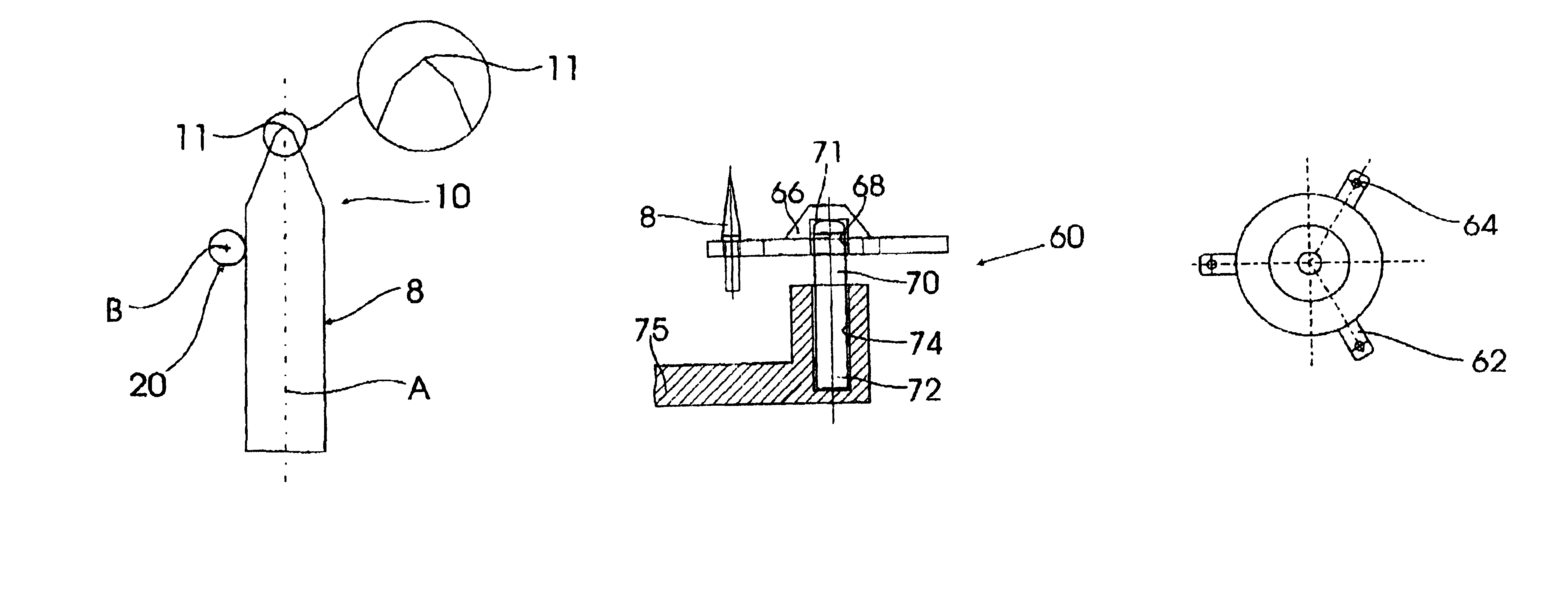Device for thermal treatment of substrates
a technology for thermal treatment and substrates, applied in lighting and heating apparatus, charge manipulation, furnaces, etc., can solve the problems of increasing pressure forces between support tips and wafers, unusable particles, and mechanical impressions of support elements in wafers, so as to prevent the crazing of support elements on the wafer surface and hold the height or position of substrates essentially in the chamber
- Summary
- Abstract
- Description
- Claims
- Application Information
AI Technical Summary
Benefits of technology
Problems solved by technology
Method used
Image
Examples
first embodiment
[0043]FIG. 4 shows a carrier construction 6 for a support element 8 in the form of a support pin. The support pin 8 has a first end 10 with a support tip 11 for receiving a semiconductor wafer. An opposite end 13 of the support pin 8 is secured in a suitable manner to a flat helical spring 15. The helical spring 15 is formed by cutting out a portion 16 from a thin plate 17, for example a thin quartz plate. Due to the cutout portion 16 in the quartz plate 17, the flat helical spring 15 is resilient not only in a horizontal direction but also in a vertical direction.
second embodiment
[0044]FIGS. 5 and 6 show the present invention for a movable suspension of a support pin 8. The support pin 8 has a first end 10 on which is formed a support tip 11. In this connection, the end 10 of the support pin 8 is embodied as a double cone. The support tip 11 is formed by one cone having an opening angle between 50 degrees and 130 degrees, and preferably between 80 degrees and 100 degrees. Following this cone is a second cone having an opening or generating angle between 5 and 45 degrees and preferably between 5 and 25 degrees. The thus-formed support tip is sturdy and reduces the danger that the tip will break off.
[0045]The support pin 8 has a longitudinal axis A. Mounted on one side of the support pin 8 is a pivot pin 20 having a longitudinal axis B. The longitudinal axis B of the pivot pin 20 extends perpendicular to the longitudinal axis A of the support pin 8, and is laterally offset relative thereto.
[0046]The pivot pin 20 is received in a suitable holding device, such a...
PUM
 Login to View More
Login to View More Abstract
Description
Claims
Application Information
 Login to View More
Login to View More - R&D
- Intellectual Property
- Life Sciences
- Materials
- Tech Scout
- Unparalleled Data Quality
- Higher Quality Content
- 60% Fewer Hallucinations
Browse by: Latest US Patents, China's latest patents, Technical Efficacy Thesaurus, Application Domain, Technology Topic, Popular Technical Reports.
© 2025 PatSnap. All rights reserved.Legal|Privacy policy|Modern Slavery Act Transparency Statement|Sitemap|About US| Contact US: help@patsnap.com



